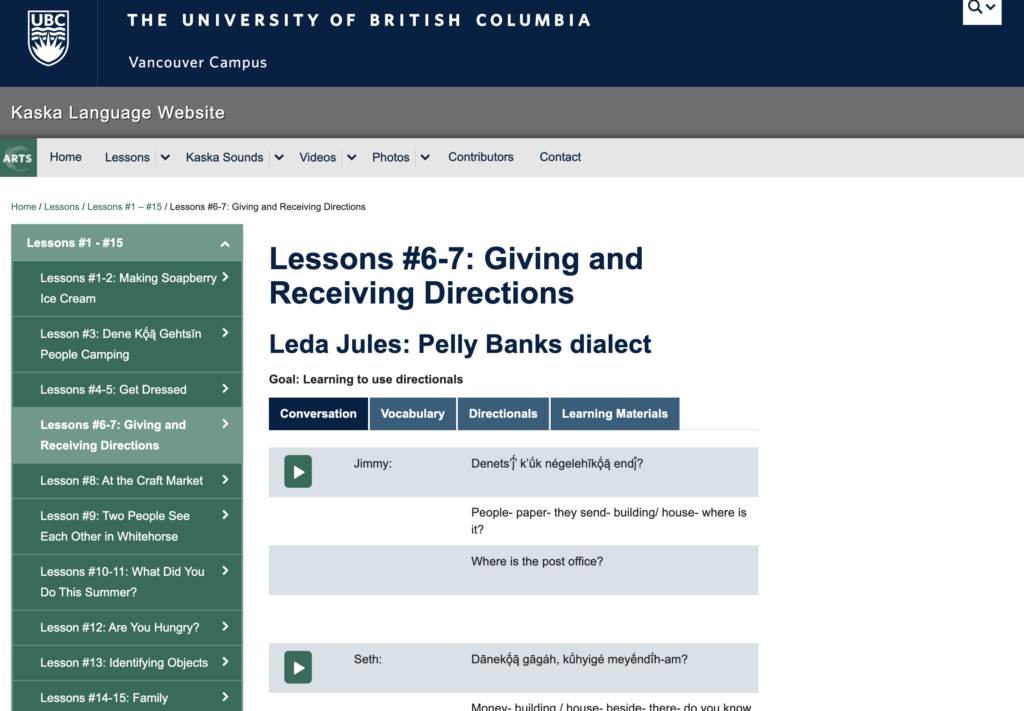Current project(s): Typotheque Indigenous North American Type

This language technology work, led by a research-team established by Typotheque, aims to break down technological barriers for Indigenous languages. Typotheque is a type design company recognised internationally as experts in multilingual typography. Our team is working in community-driven partnerships to comprehensively research and document the text encoding, keyboard sources, technical issues, and typographic preferences of Indigenous language communities.
Issues presented by a lack of adequate keyboards, accurate font rendering support and glyph representation can restrict a community’s ability to exercise self-determination over their language in digital spaces. Alongside supporting communities with their specific needs, we develop text, video and web-based resources to share research outcomes, and work with Indigenous and non-Indigenous community partners to roll out solutions to technological barriers for language access.
Previous projects:
FirstVoices
(role: Development Manager)
Over the course of four years working on the FirstVoices team, I led a diverse group of 15+ staff and contractors, managing a range of technology projects for BC-based Indigenous languages. My main goal was always to ensure that our language technology work was aligned with the needs and goals of the First Nations communities across the region. I oversaw the three-year redevelopment of FirstVoices.com, which involved a full redesign and recoding of the system using a modern tech stack. In addition, I secured over $1M in funding for special projects, which supported the development of new mobile apps and a research project to improve the functionality of FirstVoices keyboards. Alongside FirstVoices-specific tools, I also provided technical guidance on the First Peoples’ Map.

Languages of New York City GIS Map
(role: Language Technology Consultant)

With speakers of approximately 10 percent of the world’s 6000-7000 languages, the New York metropolitan area is the most linguistically diverse urban center in the world. The Languages of New York City map includes over 700 languages and dialects confirmed to over 1200 significant sites. This map comes out of the project Mapping Linguistic Diversity in a Globalizing World through Open Source Digital Tools, a collaborative partnership between the University of British Columbia and the Endangered Language Alliance. I consulted on the technical solutions required to accurately represent linguistic diversity through GIS tools, providing direction and insight in early phases of this open-source map project.
Heiltsuk Language and Culture Mobilization Partnership
(role: Linguist & Lead Web Developer)
Through a Memorandum of Understanding active from 2016-2020, the Heiltsuk Cultural Education Centre, the Bella Bella Community School and UBC’s First Nations and Endangered Languages Program partnered to collaboratively create new opportunities for speaking, writing and reading the Haíłzaqvḷa language. We did this by expanding and deepening existing community language revitalization and cultural documentation in a digital environment.
During this time, I designed and implemented digital Haíłzaqvḷa language tools such as interactive alphabets and storybooks, collaborating with the local cultural centre and school to maximize online learning opportunities for all ages. By fostering and maintaining relationships with key community partners including Elders, teachers and Indigenous language experts in both Bella Bella and Vancouver, I was able to take guidance from Language Champions to develop web-based tools. I also used audio processing technology to record, digitize and preserve Haíłzaqvḷa language in support of community revitalization goals, developing a 2500+ virtual word list with interactive learning elements.

Kaska Language Program
(role: Language Technology & Web Consultant

This website was created to house the Kaska language materials from the Kaska language courses that are jointly sponsored by the First Nations Endangered Languages Program at the University of British Columbia and the Kaska First Nations. The website is available for use by students in language courses, by Kaska community members, and by others interested in learning Kaska. I worked with community-developed materials to create 105 digital lessons and other educational tools using audio and linguistic data to support Kaska learners from both Ross River Dena Council and Liard First Nation. I also parsed 30+ hours of conversational videos with Elders using video and audio editing software.